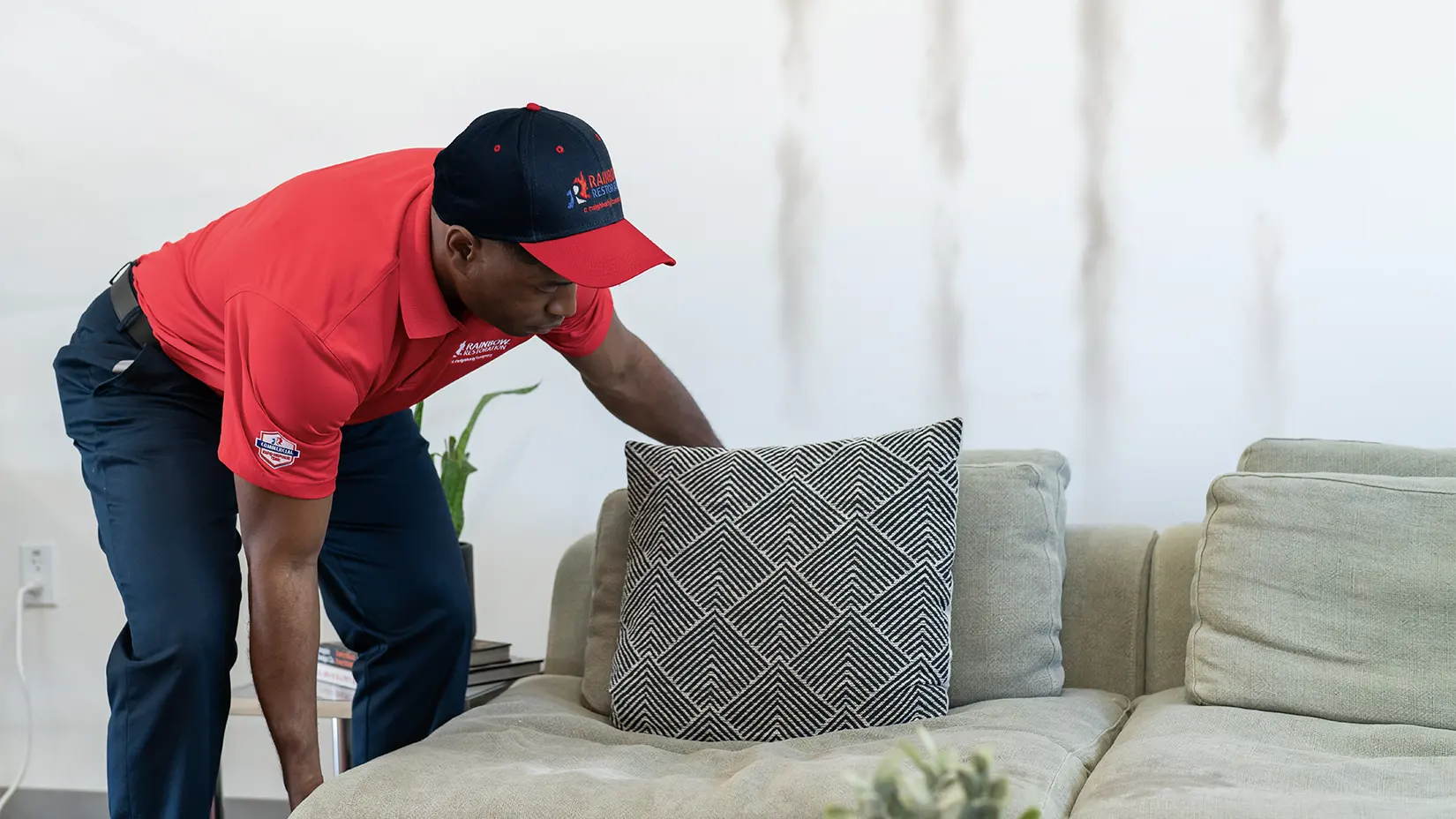
Ghosting is when damp air and particulates like soot and dust condense on a wall or ceiling in streaks or lines. Ghosting can result from poor ventilation, improper insulation, humidity, and a high concentration of particulates in the air. Improving insulation and ventilation, along with regular HVAC service, can help reduce or stop ghosting.
In a room with gray or black streaks on the wall, it’s easy to assume there's been smoke damage or mold growth. But these linear, sooty patterns aren’t mold — they’re called ghosting.
But what exactly is ghosting on walls and ceilings? It’s when materials in the air are attracted to cool or humid air that then sticks to walls or the ceiling.
Let’s learn more about what causes ghosting, if it’s dangerous, how to tell the difference between ghosting and mold, and how to treat the causes of ghosting to stop it from happening again.
What Is Ghosting on Walls and Ceilings?
Ghosting is a phenomenon where stains appear on walls and ceilings. They might look like straight streaks or lines that follow the framing of the building. Ghosting happens when air condenses on walls and ceilings where there are stark temperature differences.
Ghosting is most likely to be found in rooms where ventilation may be lacking and moisture is high. This includes kitchens, bathrooms, the area surrounding cold storage, and any room where people smoke or use candles frequently.
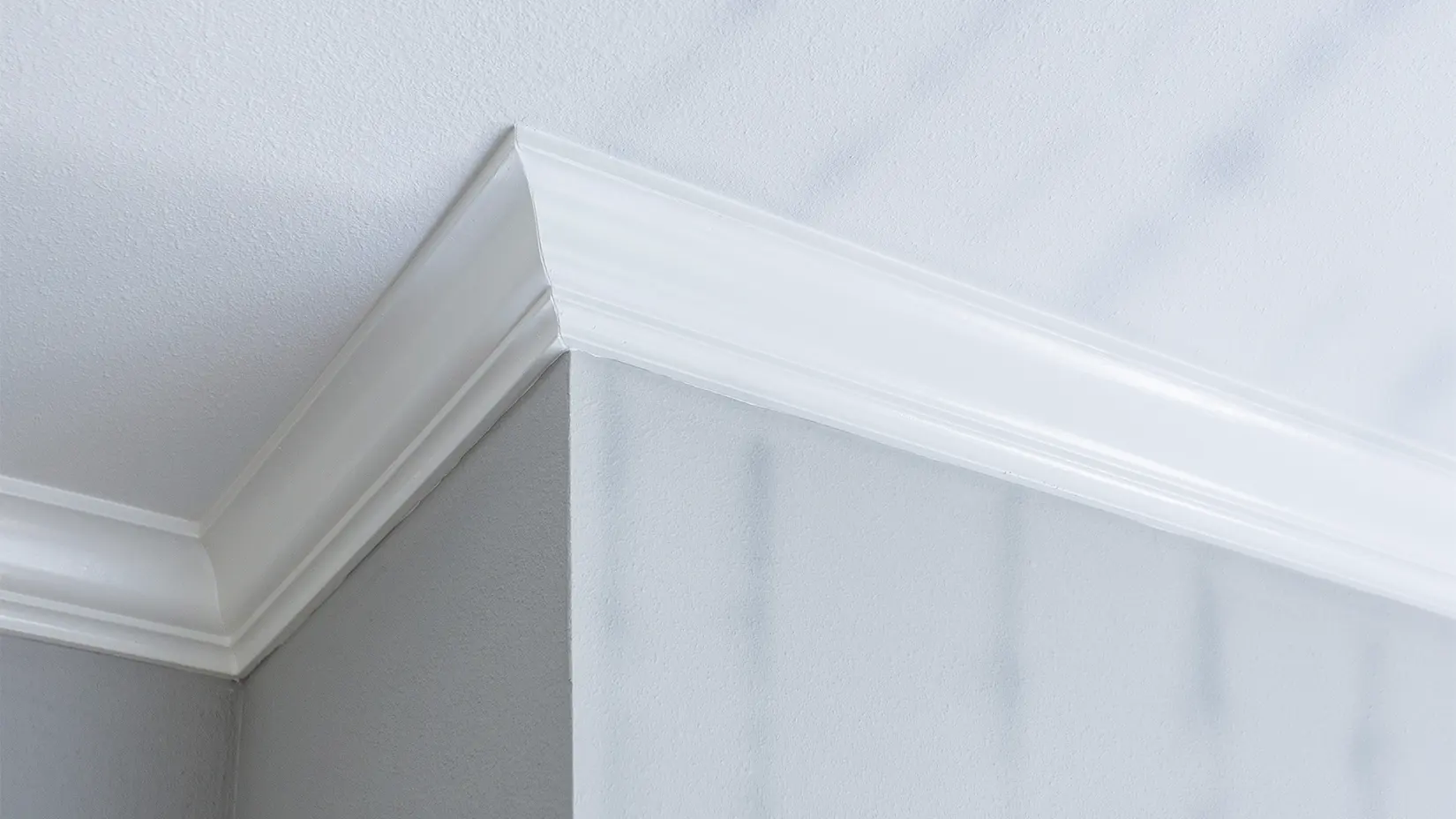
Is Ghosting Dangerous?
It’s common to ask, “Is ghosting on walls bad?” Ghosting is not inherently dangerous to people, pets, or the structure itself. Ghosting isn’t a type of mold, it isn’t eating away at wood, drywall, or other building materials and isn’t causing allergic reactions or respiratory problems in people and animals.
While ghosting itself isn’t dangerous, it does indicate other issues that should be addressed. Poor ventilation and high humidity could create an ideal environment for mold, which can be dangerous to people, pets, and make a building unsafe.
4 Common Causes of Ghosting
Not all ghosting looks the same or is caused in the same way. Four of the most common causes of ghosting include insulation gaps, indoor air quality, high humidity, and poor ventilation. In some cases, more than one of these issues can result in ghosting.
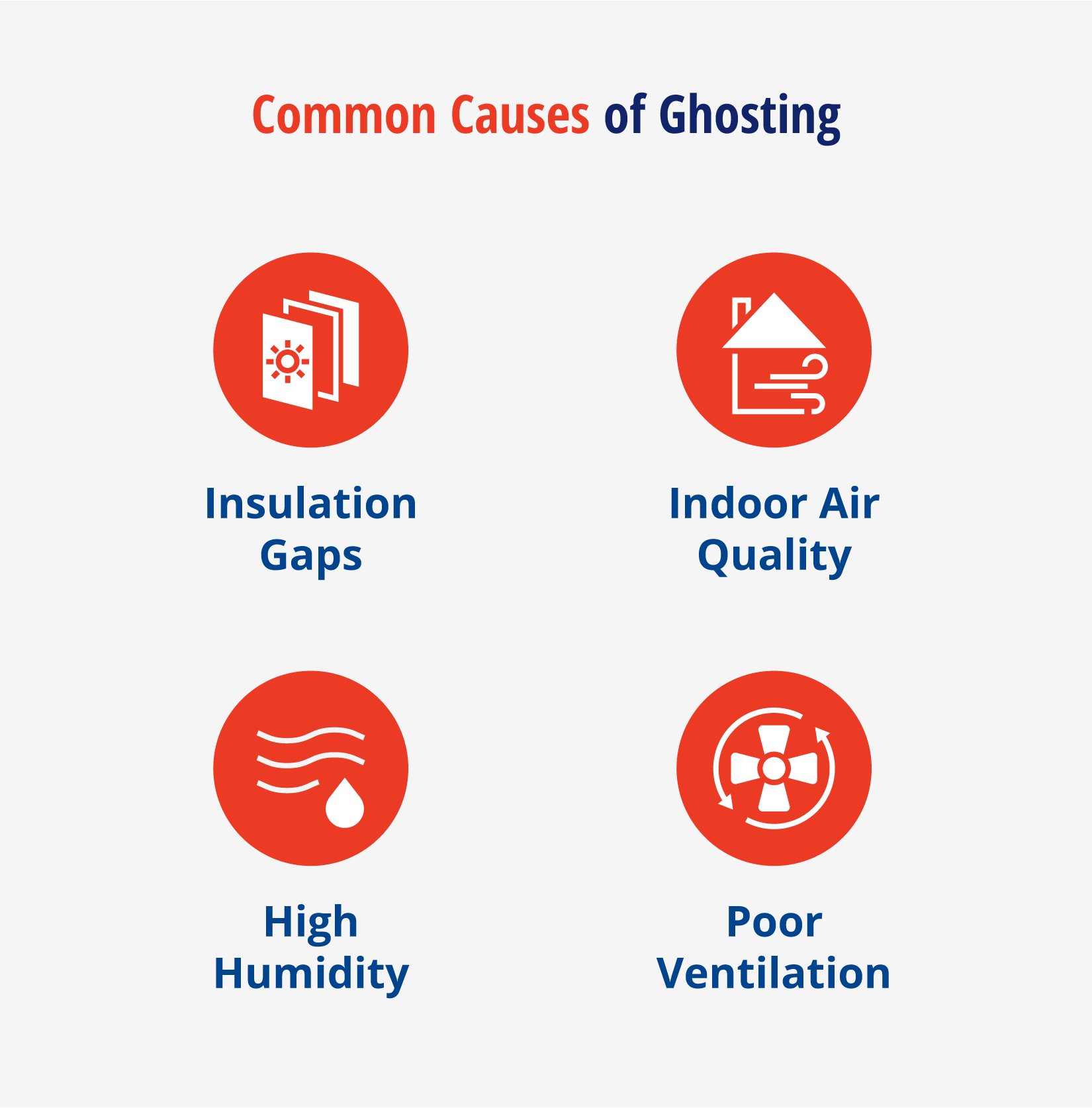
1. Insulation Gaps and Thermal Bridging
Some ghosting is caused by gaps in insulation that allow cold air to seep into a building. Once inside, this air creates cold spots that cause suspended particulates to condense. Insulation installed with gaps at the floor, ceiling, or around framing is a common cause of thermal bridging (another name for ghosting).
Thermal bridging commonly looks like lines or streaks on ceilings and walls. These streaks align with the studs of the building. If there are cold spots in a building, the streaks will generally be more pronounced.
2. Indoor Air Quality and Particulate Matter
Poor indoor air quality in the workplace or home can also lead to ghosting. Dust, soot, smoke, and burnt food can all lead to high concentrations of particulate matter in the air, lowering air quality.
In areas with high airflow — near doors, windows, vents, or kitchen hoods, for example — the combination of particulates and cool surfaces like walls and ceilings can cause smoky, shadowy stains.
3. High Humidity
If a building has high humidity, it can cause moisture to condense on the cooler surfaces of walls and ceilings, trapping airborne particles. As these particles build up, they appear as lines or streaks. Because of the buildup of particulates, there may be a slight difference in texture between the wall and these streaks.
Areas with high humidity, like bathrooms, cold storage, and pools, are more likely to have ghosting on the ceiling and walls.
4. Poor Ventilation
Poor ventilation can also lead to thermal tracking as humid air and particulates are trapped and eventually settle on walls and ceilings. This form of ghosting occurs near vents, corners, and other areas with less-than-optimal airflow.
Windowless rooms, kitchens, and bathrooms are all at risk of poor ventilation, especially if fans and vents are not regularly cleaned. Having the proper equipment in place to clear smoke from a room quickly can help cut down on ghosting, as can regular air duct maintenance.
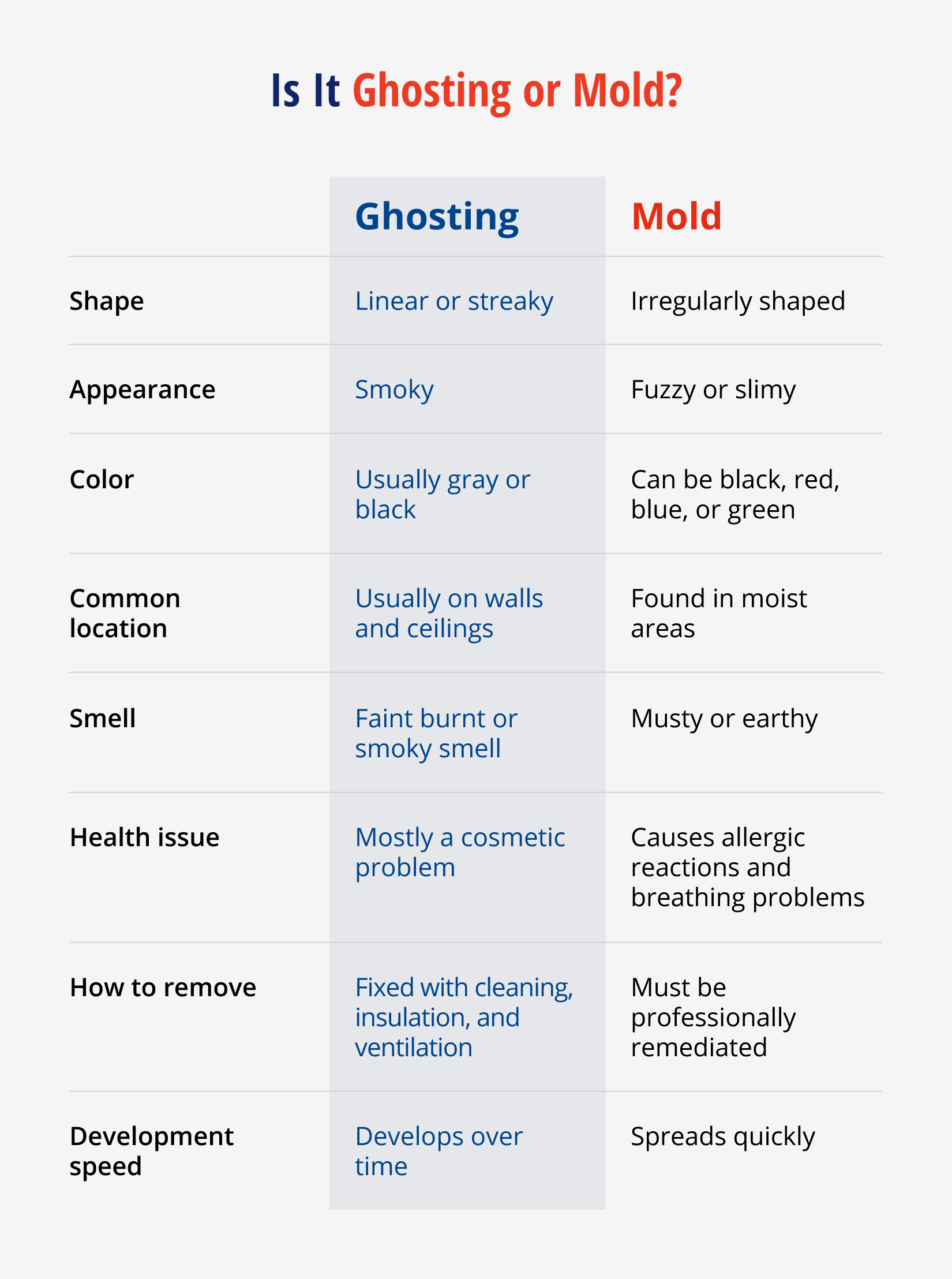
Ghosting or Mold: Key Differences
Discoloration on ceilings and walls can be jarring, but it doesn’t necessarily mean it’s mold. Luckily, the differences between ghosting and mold are easy to identify. While ghosting may not look great, it is usually a simple cosmetic issue that can be fixed with insulation, HVAC maintenance or ventilation and/or air quality upgrades, and some paint.
Mold not only looks bad, but it can impact a building’s integrity and jeopardize the health of the people inside. Identifying mold quickly can help reduce the amount of damage it does to a building.
This is why it's paramount to request an appointment with professional remediation services like Rainbow Restoration® as soon as possible to effectively address mold issues, prevent further damage, and ensure a safe environment.
Here are a few of the key differences between mold and ghosting:
| Ghosting | Mold | |
|---|---|---|
| Appearance | Gray or black linear or streaky patterns, shadow-like, smoky, or subtly textured. | Irregular patches or clusters, often fuzzy or slimy in texture, in various colors including black, green, red, or blue. |
| Location | Walls and ceilings in areas with cold spots due to insulation gaps or near indoor air pollution sources. | Moist areas like bathrooms, basements, under sinks, and hidden areas like inside walls or under carpets. |
| Smell | Rarely has a strong odor; if present, it’s usually faint and may smell like an old electrical fire. | It often has a musty, earthy smell indicative of active mold growth and decay. |
| Effects | Primarily cosmetic, causing stains; rarely affects structural integrity or health. | Can cause significant material damage and health issues, especially respiratory problems and allergic reactions. |
| Cleanup and Treatment | Usually managed with cleaning and painting, plus addressing underlying causes like insulation or ventilation. | Requires professional remediation and moisture control to prevent recurrence. |
| Growth Pattern | Develops over time, with stains becoming darker with continued exposure to particulates and cold spots. | Grows and spreads rapidly in suitable conditions, with visible deterioration occurring within days to weeks. |
Professional Remediation and Mold Removal Services
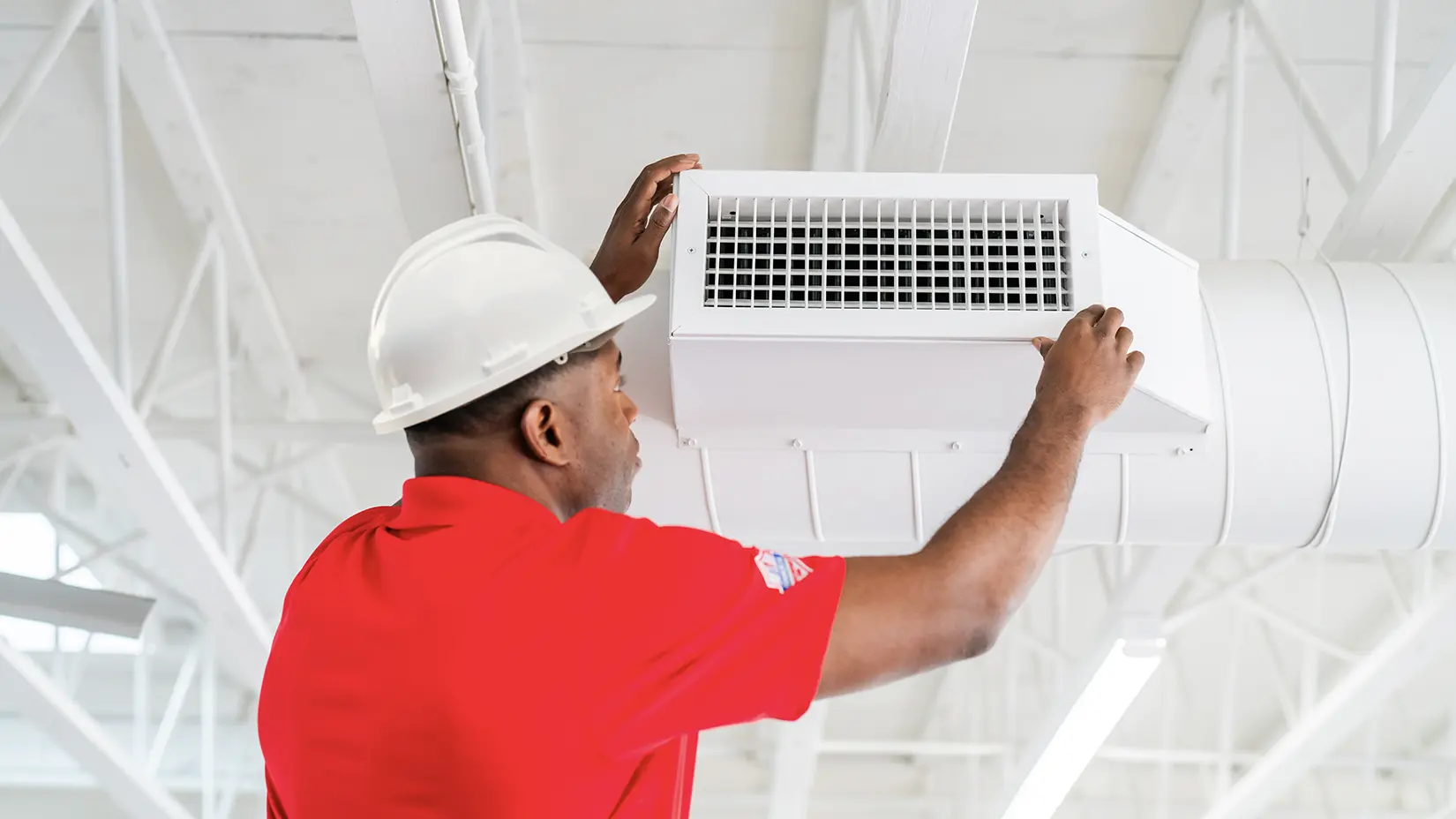
When ghosting is a problem in a building, the first step to correcting it is to address the underlying cause. In some cases, it may be necessary to:
- Reduce the number of particulates in the air through better ventilation
- Add insulation to fill gaps
- Fix or replace a poorly functioning HVAC system to reduce humidity and reduce warm and cool spots
- Paint surfaces with stain-resistant paint
Learning how to clean ghosting on walls and ceilings is straightforward. Using a cloth and a cleaner that is drywall and paint-safe, scrub the marks. If they are stubborn, you may need to paint over them.
If ghosting has been eliminated as the cause of discoloration on the walls or ceiling in a structure, it could mean there’s mold present. If you have a mold concern, contact restoration professionals to remediate and remove the mold from the building safely.
Here’s how Rainbow Restoration® does it:
- Inspection: Rainbow Restoration®’s team of experts will first map the extent of the mold’s presence and identify its source.
- Containment: To halt mold spread, the team will then establish a secure containment zone, simultaneously addressing the moisture or leak causing the issue.
- Air filtration: Next, with the help of HEPA filters, the air will be purified of mold spores and fine particulates, significantly improving indoor air quality.
- Removal: Depending on their condition, mold-infested materials are then safely removed, discarded, or cataloged for further processing.
- Structural drying: After mold-infested materials are removed, the affected area is thoroughly dried to ensure moisture and humidity levels are brought back to safe levels.
- Reconstruction (if required): Finally, Rainbow Restoration® service professionals devise a plan for the replacement of affected materials, such as drywall and flooring, and proceed with restoring the space to its original condition or better.
Frequently Asked Questions About Ghosting
How Do You Get Rid of Ghosting on Walls?
You get rid of ghosting on walls by treating the cause first. After the underlying issue is addressed, you can scrub the area with a solution of water and bleach, wait for it to dry completely, and then paint it.
Can You Paint Over Ghosting on Walls?
While you can paint over ghosting, it will only be a temporary fix. Without treating the cause of ghosting, like adding insulation, fixing window seals, or dehumidifying the building, it’s likely to return.
Does Ghosting Mean There Is Mold?
Ghosting does not mean there is mold in a building, though mold may also be present. The particles that make ghosting visible are usually dust, soot, or dirt, but it could also be mold. If there is mold, it will continue to spread outside of the straight lines of a building’s framing and will need to be addressed by a professional mold remediation service.
What Causes Thermal Ghosting?
Thermal ghosting is caused by dust, soot, and other particulates in the air adhering to walls or ceilings due to cold or humid air. In a properly insulated building, cold or humid pockets of air don’t exist (or are quickly dispersed), but if there are gaps in insulation, these areas can attract particles that then stick to the ceiling or walls. Regularly cleaning air vents and ensuring a building is properly insulated can help prevent thermal ghosting.
Rainbow Restoration® Can Help With Mold Remediation and Removal
If you’ve noticed staining on your ceilings and/or walls, and you’re not sure if it’s ghosting or mold, contact the service professionals at your local Rainbow Restoration for help. Rainbow Restoration offers mold removal and remediation, along with a wide range of other restoration services for commercial and residential buildings.
This article is intended for general informational purposes only and may not be applicable to every situation. You are responsible for determining the proper course of action for your property. Services should be performed by licensed and experienced professionals. Rainbow Restoration is not responsible for any damages that occur as a result of this blog content or your actions. For the most accurate guidance, contact a Rainbow Restoration professional for a custom, on-site assessment.
